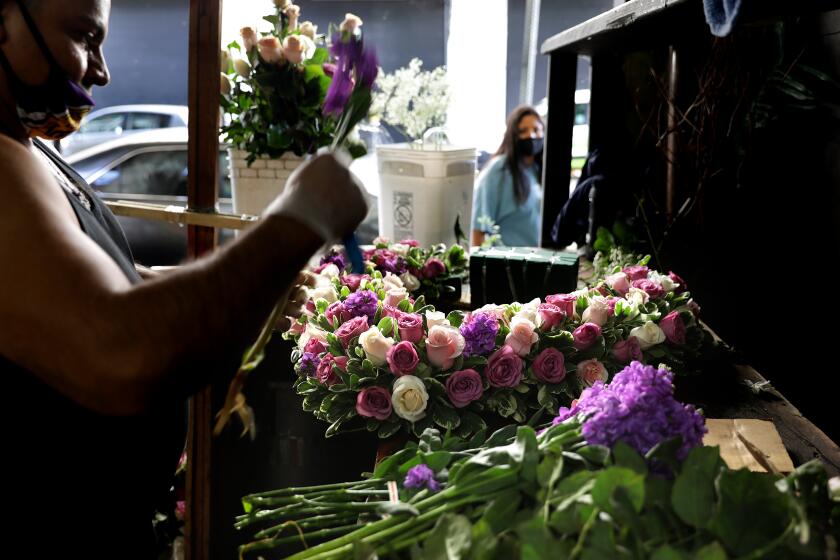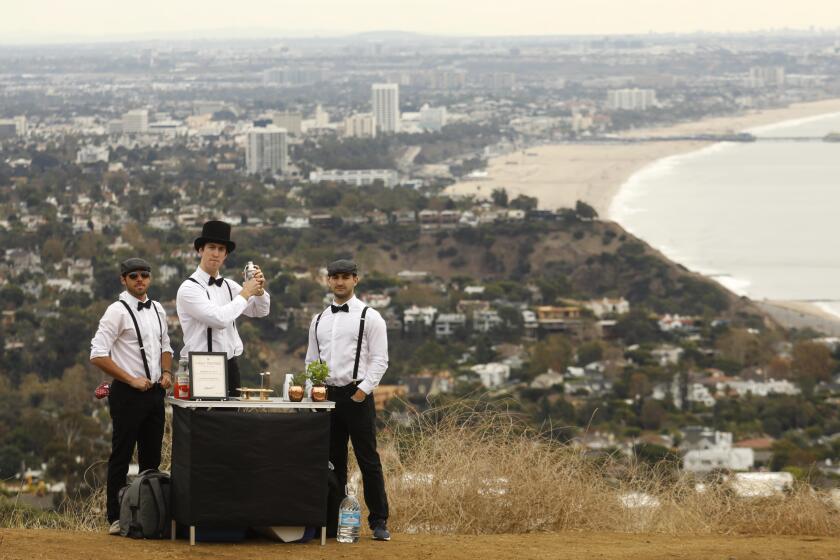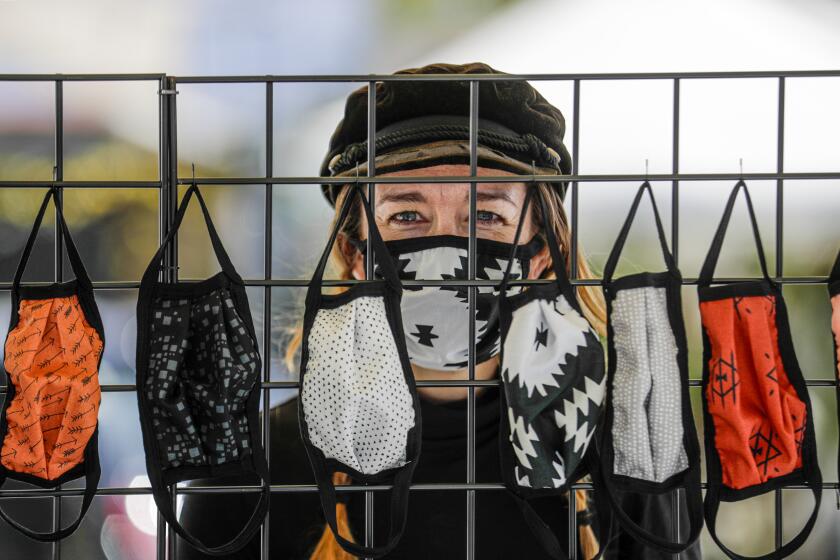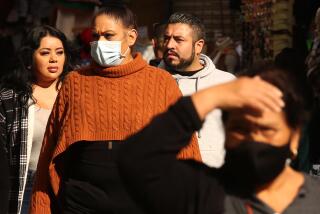Face masks will be an even bigger part of L.A. life as reopening begins
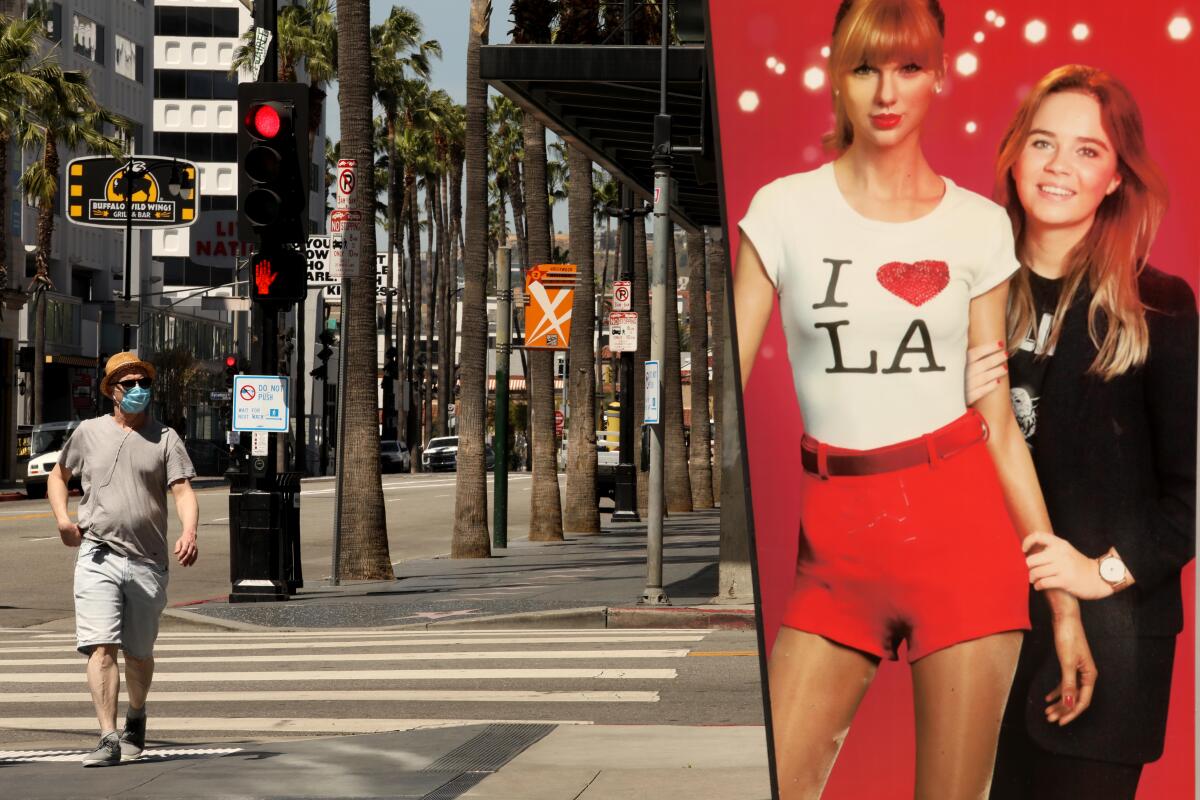
Los Angeles will inch toward reopening itself and its economy Friday, and it’s become clear that face coverings will be an even bigger part of post-pandemic life.
Here is where masks are currently required, as well as proposals that would dramatically increase face-covering requirements to the spread of the coronavirus:
Across Southern California and in the Bay Area, communities are preparing to allow retailers to reopen, with restrictions.
Airports and buses
Beginning Monday, anyone traveling through Los Angeles International Airport must wear a mask or face covering.
On top of the LAX mask rule — a move that Mayor Eric Garcetti said aligns with requirements by many major airlines — the mayor announced that, starting Monday, anyone riding a city bus will be required to wear a face covering.
There is also a push to require masks on all buses and trains in Los Angeles County during the coronavirus outbreak.
Allowing passengers without face coverings to ride on Metropolitan Transportation Authority buses “threatens to compound the spread” of the coronavirus because many workers at grocery stores, restaurants and other essential businesses rely on public transportation, County Supervisor Janice Hahn said in a letter Monday.
Hahn, who is also a Metro director, noted that the county is requiring customers to wear face coverings while visiting essential businesses. Transportation is an essential service too, she said, and should have the same requirements.
Hahn’s letter to Metro Chief Executive Phil Washington cited a Times report about bus drivers who said they feared for their health because many riders were not wearing masks and bus yards faced periodic shortages of masks, hand sanitizer and other protective gear.
“If I come to work, am I going to catch it today? Will I catch it tomorrow? Will I catch it next week?” said a driver in Boyle Heights. “It’s always in the back of my head.”
As you prepare to lace up the hiking boots again, be on the lookout for these lads in the bow ties and suspenders. More than hikers, they’re also bartenders.
Businesses and beyond
Rules already require both shoppers and store employees to wear face covering inside essential businesses like supermarkets.
Face coverings are also a big part of the modest reopening planned in L.A. County on Friday. This is what is affected:
Nonessential business reopening for curbside pickup with adherence to distancing and infection-control protocols
- Bookstores
- Clothing stores
- Florists
- Music stores
- Sporting goods stores
- Toy stores
- Car dealership showrooms (open for sales with adherence to distancing and infection control protocols)
Outdoor parks and recreational facilities are open provided all activities adhere to social distancing and infection-control protocols
- Golf courses (not including pro-shops or dine-in restaurants)
- Trails and trailheads
- Parks
These rules remain:
- Wear a face covering while on trails and when running errands
- Wash hands throughout the day
- Stay six feet away from people who don’t live with you
L.A. leaders are exploring whether to require residents to wear masks or other facial coverings whenever they leave their homesto prevent new coronavirus infections.
What could be next
Los Angeles leaders are exploring whether to require Angelenos to have masks or other facial coverings whenever they leave their homes, a proposal championed by City Councilman Paul Koretz as a way to prevent new infections.
“The last thing we need is another spike in cases to set us back as we’re trying to move forward,” Koretz said.
The council has not yet decided to draft such a law, but voted Wednesday to ask city staffers to report back on health guidelines for wearing masks, what requirements have been imposed by other cities, and how such rules might be enforced.
“People still walk dogs. They still ride bicycles. They still may stop and chat with their neighbors,” Koretz said in an interview. “This would reduce the spread.”
Koretz said that, under such an ordinance, people would be required to have the masks either already on their faces or close at hand so they could put them on quickly whenever they approached someone from outside their household.
The councilman argued that mandating that masks would help keep people who are infected but asymptomatic from unknowingly transmitting the virus. He pointed to the Czech Republic, which imposed a similar requirement, as an example of how the mandate could reduce new infections.
At Wednesday’s meeting, some council members remained uncertain: Councilman Gil Cedillo raised concerns about racially discriminatory enforcement of mask rules against African Americans.
Councilman John Lee also expressed reluctance, saying that in his district, people seemed to be behaving responsibly to maintain social distancing and “already feel confined as it is.”
‘We may be moving gently at this point toward the Asian culture,’ one health expert says of everyday mask-wearing.
Face covering guidance
Here’s some advice from California health officials:
- Wash your cloth face covering frequently, ideally after each use, or at least daily.
- Have a separate bag or bin to keep used cloth face coverings in until they can be laundered with detergent and hot water and dried on a hot cycle.
- If you must rewear your cloth face covering before washing, wash your hands immediately after putting it back on and avoid touching your face.
- Discard cloth face coverings that no longer cover the nose and mouth, have stretched out or have damaged ties or straps, cannot stay on the face, or have holes or tears in the fabric
Health experts have also suggested routinely washing your hands with soap and water or using hand sanitizer before and after touching your face or face coverings.
Once surgical masks get moist, experts said their effectiveness diminishes. If a makeshift mask gets moist or is visibly soiled, it’s time to switch to a clean one.
To clean them, run masks through the laundry or hand wash them with soap and water.
More to Read
Sign up for Essential California
The most important California stories and recommendations in your inbox every morning.
You may occasionally receive promotional content from the Los Angeles Times.
